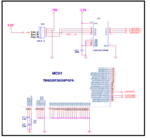Fikadu
Junior Member level 3

Hello every one. I am new to motor encoder. While trying to read motor encoder position counter and direction via Quadrature Encoder Pulse (QEP) , the position counter reading is good, where as direction reading keeps changing from 0 to 1, though the motor is moving to the same direction. why do you think this happens? The other thing is that, as obviously known the position counter resets to zero each time power is reset. As I am trying to control a variable capacitor position, I need to store a current position of the capacitor to a non-volatile memory for a next power startup. I have EEPROM for this, but as you know EEPROM is writing cycle limited memory. For my application, it may need to update the position to the EPPROM several times per second which may reaches to writing limit with in few time. I couldn't find a reliable solution for this problem. can you suggest me a better solution for the problem? is there any other mechanism to keep an encoder position count for the next start up without non volatile memory?
Thank you a lot
(F.Y.I My motor and encoder type is : pkp264d28a-r2el)
Thank you a lot
(F.Y.I My motor and encoder type is : pkp264d28a-r2el)

